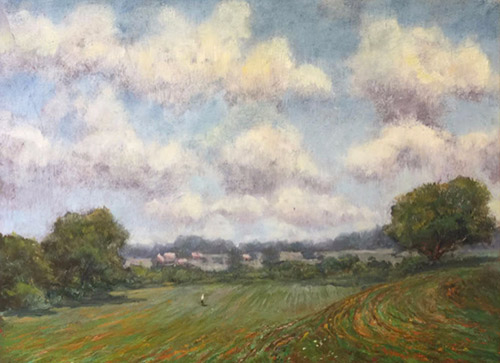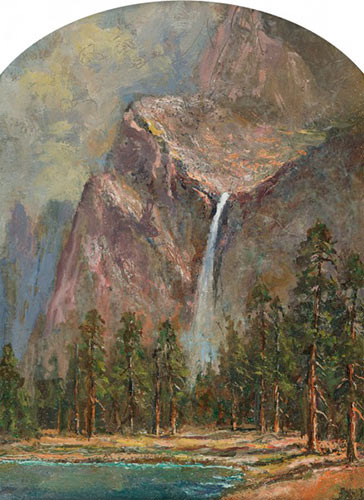With a nod to 19th-century landscape masters and the French Barbizon School, Jerry Malzahn offers his latest examples of poetry in paint during an upcoming solo exhibition.
There have been a number of painters who capture well the breadth of America’s natural beauty. Thomas Moran, Albert Bierstadt, and John Frederick Kensett established lasting careers and legacies stemming from their heroic Western landscapes and grand panoramas. Born in Arkansas but a Texas resident, Jerry Malzahn has been establishing his own career within that artistic lineage since 1994. His powerful landscapes evoke feelings of awe and wonder, similar to the Hudson River School, but his application of paint has a delicacy and expressiveness that sets the mark of his individuality. Also notable are the dreamlike atmospheres of Malzahn’s work, which pays homage to artists of the French Barbizon School, such as Camille Corot and Henri-Joseph Harpignies.

Jerry Malzahn, “Cotton Farm, Friendship, Tennessee,” 2006, oil on paper laid down on board, 11 x 14 in. Questroyal Fine Art.

Jerry Malzahn, “Brida Veil Falls,” oil on board, 6 5/8 x 4 5/16 in. Questroyal Fine Art.
Malzahn will feature his latest pictures during an exhibition and sale at Questroyal Fine Art in New York City. “Jerry Malzahn: American Landscapes” will open on July 24 and hang through August 15.
To learn more, visit Questroyal Fine Art.
This article was featured in Fine Art Today, a weekly e-newsletter from Fine Art Connoisseur magazine. To start receiving Fine Art Today for free, click here.








